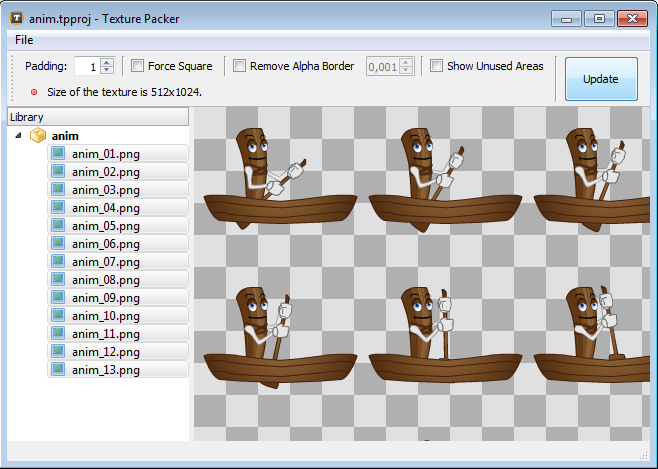Difference between revisions of "TexturePack"
| Line 24: | Line 24: | ||
This tool exports two files: A ''.txt'' file that specifes the positions of texture regions and a ''.png'' file of packed texture.<br /> | This tool exports two files: A ''.txt'' file that specifes the positions of texture regions and a ''.png'' file of packed texture.<br /> | ||
Use these two files to create texture pack:<br /> | Use these two files to create texture pack:<br /> | ||
| − | <source lang="lua">local pack = TexturePack.new( | + | <source lang="lua">local pack = TexturePack.new("pack.txt", "pack.png")</source><br /></translate> |
{|- | {|- | ||
| style="width: 50%; vertical-align:top;"| | | style="width: 50%; vertical-align:top;"| | ||
Revision as of 15:44, 26 June 2019
Supported platforms: ![]()
![]()
![]()
![]()
![]()
![]()
![]()
Available since: Gideros 2011.6
Inherits from: TextureBase
Description
The TexturePack class specifies a texture pack (or texture atlas). A texture atlas is a large image which contains many smaller sub-images.
Gideros supports dynamic creation of texture atlases and pre-packed texture atlasses by using "Gideros Texture Packer" tool.
Dynamic Creation of Texture Packs
To create a texture pack dynamically (at run-time), create TexturePack object with a table of file names of textures.
local pack = TexturePack.new({"1.png", "2.png", "3.png", "4.png")}
Static Creation of Texture Packs
To create a pre-packed texture atlas, use "Gideros Texture Packer" tool:

This tool exports two files: A .txt file that specifes the positions of texture regions and a .png file of packed texture.
Use these two files to create texture pack:
local pack = TexturePack.new("pack.txt", "pack.png")
MethodsTexturePack.new creates a new TexturePack object |
EventsConstants |